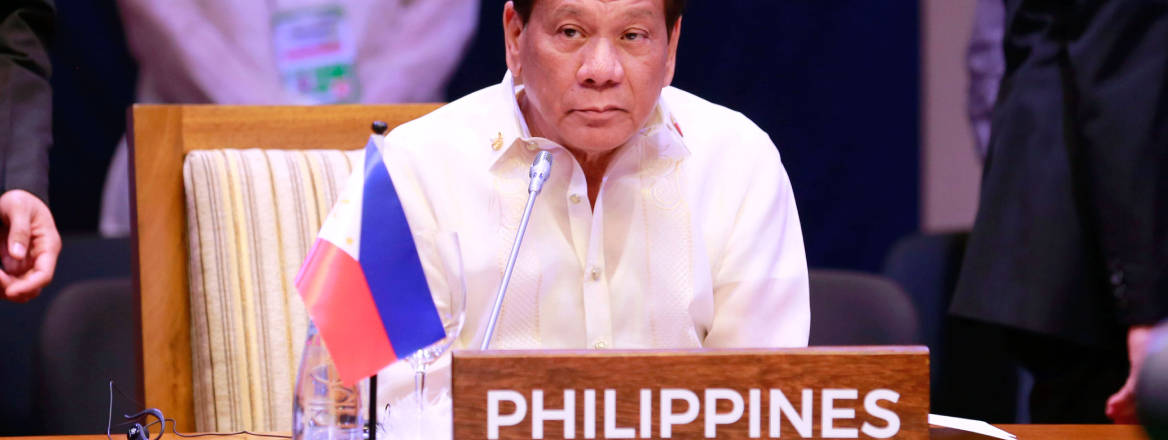ASEAN at 50: Time for a Stronger Political and Security Community
ASEAN is navigating the choppy waters of regional power struggles as it marks a successful half-century.
The Association of Southeast Asian Nations (ASEAN) marked its 50th anniversary at the end of last month with a summit chaired by the Philippines. It was even more poignant due to Philippines President Rodrigo Duterte’s conciliatory attitude towards Beijing, notwithstanding concerns over Chinese military installations in the disputed waters of the South China Sea.
At first glance, the Chairman’s Statement at the end of the event is congratulatory about the organisation’s engagement with China, and over the South China Sea issue, although media reports painted a less harmonious picture.
However, there is no question that ASEAN’s ten member states now have to decide if the creation of a strong political and security community remains their long-term strategic ambition. For if that is not the case, then external powers – likely China – will increasingly play a stronger hand in the region’s future.
ASEAN deserves to be proud of its achievements, particularly in the Political-Security Community (APSC), which promotes nuclear non-proliferation, human rights and defence dialogues.
Whether these initiatives form a coherent strategic direction for the region is another matter altogether. The APSC targets confidence-building measures, but largely limits these to information sharing and dialogue among members, offering a stronger role for the ASEAN Regional Forum – a defence dialogue platform – to advise the APSC, and for greater cooperation with Dialogue Partners.
But it does not aim to consolidate concrete regional ASEAN defence cooperation at a time when members are increasing their annual defence expenditures as a result of rising threat perceptions. It would do well with this extra cooperation.
Indeed, finding a unified response to disputes with major powers remains difficult for the region. China, for example, has undertaken a three-pronged approach towards Southeast Asia and the South China Sea disputes, which comprises the following efforts:
- Bilateral diplomacy through defence cooperation and infrastructure investment deals.
- Engagement with ASEAN on, among others, the long-awaited maritime Code of Conduct.
- Continued installation of military facilities on its constructed islands by invoking justifications of self-defence, which inch China towards de facto control over the territories it claims in the South China Sea.
This strategy seems to be working, not only in achieving China’s strategic maritime objectives, but also in protecting itself from paying any serious price for its behaviour thus far.
Despite Manila winning an international legal case against the validity of China’s maritime claims in the South China Sea, Sino-Philippine relations have improved under Duterte.
Other countries have also taken a more conciliatory tone.
In January 2017, Vietnam and China pledged to improve maritime cooperation, a change from the previous Vietnamese musings on whether it too should turn to international arbitration over its own claims in the South China Sea. And last month, Malaysia and China announced that they would establish a High-Level Defence Committee.
Ultimately, the bilateral relationship between ASEAN and China is asymmetric, and so too are the ASEAN states’ negotiating powers, when not used collectively. This was evidenced when it was reported that although an earlier version of the Chairman’s Statement made reference to China’s island construction and militarisation, the final version dropped both.
Although this year’s statement noted that some ASEAN leaders had expressed concerns over recent developments, the ASEAN–China relationship was still described as increasingly cooperative and the statement highlighted progress made on maritime communication and crisis management initiatives. Unsurprisingly, China welcomed the final statement, noting that efforts to ease tensions had succeeded.
The statement is a marked departure from last year’s document produced by Malaysia, the then chair. It had noted ‘serious concern’ over China’s island construction methods and creeping militarisation of the South China Sea, as well as the necessity to adhere to peaceful methods.
The problem is that the mood in ASEAN seems to have changed to one where challenging a major power such as China within the Summit is seen as pointless – at least by Duterte, who days before publicly wondered: ‘Who can pressure China? Us?’
Unsurprisingly, therefore, the latest ASEAN chairman’s statement preferred instead to note North Korea and terrorism as the region’s threats, a sort of displacement activity for the real challenge.
It is clear that some ASEAN leaders are concerned with on-going regional developments. While maritime cooperation initiatives within the regional organisation context are a step in the right direction, the previous Declaration of Conduct in the South China Sea and promises to ‘act with restraint’ continues to fall on deaf ears.
Perhaps this time will be different. However, without a real strategic vision for the region and without capitalising on the growing regional capabilities, powers like China will continue to circumscribe the space in which ASEAN enjoys the autonomy to formulate the direction of its region in security terms.
There is nothing inherently wrong in ASEAN concentrating on economic growth and other modest political objectives. However, the organisation’s Political-Security Community could have a broader and loftier objective for ASEAN, and it needs to be used.
WRITTEN BY
Veerle Nouwens
External Author | Former RUSI Senior Research Fellow, Asia-Pacific


